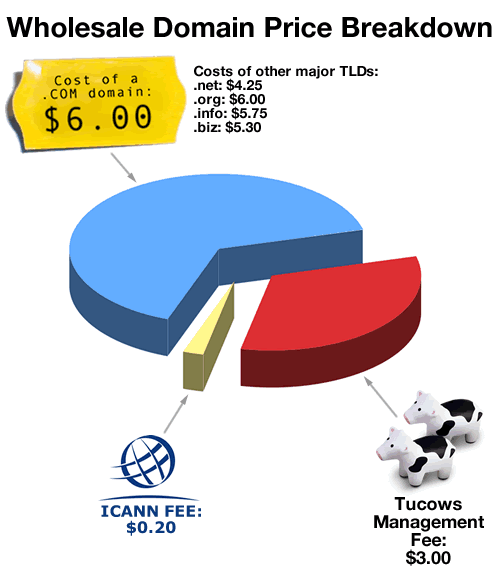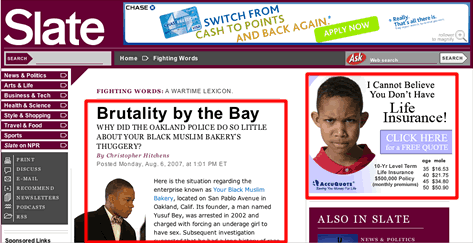FacebookCamp

The calm before the storm: the MaRS centre auditorum before people arrived.
Last night’s FacebookCamp was a success, packing the main auditorium of Toronto’s MaRS Centre (which was ready to seat 420 people) as well as spilling over into an extra room with simulcast video. It’s estimated that about 450 people attended, which makes this event the largest “Camp” style developer event ever held in Toronto.

15 minutes before the opening presentation.
Rather than comment on the event right now, let me jump into the notes! I’ll talk about the event in a later post.
Introduction (Andrew Cherwenka of Trapeze.com and Roy Pereira of Refresh Partners)

- Thanks to Facebook for flying up here to a “cooooold” Canadian summer
- Thanks to MaRS for letting us use their space
- The number of people attending grew so much that we had to keep changing venues to accomodate them — MaRS is our fourth venue!
Some facts about Facebook:
- 54+ million users
- 15 billion pageviews/month
- Toronto is the 2nd largest Facebook community in the world, with 724,000 members
- We were recently surpassed by London, but on a per-capita basis, we still beat them
- 5 of the top 10 Facebook regions are Canadian — Winnipeg and Hamilton each have more users than San Francisco!
- 2400+ approved applications representing 100 million downloads
FacebookCamp:
- We hope that this the first of many
- We want to encourage Toronto-based developers and organizations to build for and use Facebook, and leverage it to make money!
- Tonight’s presentations will be more developer-centric and technical in nature
- The next FacebookCamp will be more geared towards marketing and business development — it’ll be sometime in the fall
We’d like to thank our sponsors and those who helped out:
- This is the first Facebook Developer Garage outside the US
Let’s have a show of hands!
- How many developers in the audience? [About 40% raise their hands]
- How many marketers in the audience? [About 40% raise their hands]
- How many people from outside the GTA (Greater Toronto Area)? [A few hands go up]
- If you’re blogging this event or posting pictures on Flickr, please tag it with FacebookCampToronto so other people can easily find it
- Participate! Add to the Facebook Developer Wiki, and join the TorCamp Google Group.
Best Practices Around Product Design and Viral Marketing (Meagan Marks, Facebook)
Intro by Caitlin O’Farrell, Facebook

- Toronto is home to one of the biggest Facebook developer communities
- We want you to build apps that integrate deeply with Facebook
- We ask that you do not videotape Meagan’s presentation
- I’m excited, a little nervous
Meagan’s Presentation

Who am I?
- My title is Platform Manager
- You can find me on Facebook
- I’m an “appaholic”
Why are we here?
- Developer Garages popping up all over the US
- Facebook is the #1 site in Canada
- Canada: home to 10% of all active Facebook developers
- Toronto is in top 10 largest Facebook developer communities, beating out San Francisco and San Jose for apps with more than 5 users
- 3.3 million active users in Canada (by “active”, we mean users who log in more than once a month)
- 61% of the active users are out of college
- 68% of the active users log in daily
- Facebook gets 8.5 billion pageviews a month from Canada
- In total, there are 33 million active users
- We get 150,000 new users every day
- There are 90,000 Facebook developers
- There are 1700 apps with more than 100 users
- It’s been only a couple of months since the Facebook platform was launched (at f8, in the Bay Area)
- A number of popular apps have spring up since then: Zombies, Pirates, Scrabulous, Crackbook (credit to Amber Mac for that name) and Appsaholic
Facebook Platform:
- What is Facebook Platform?
- Google Maps, OS X dashboard widgets — noth are examples of platforms
- Facebook’s platform is built on the Facebook Social Graph, which is made up of the connections between Facebook users
Facebook cares about:
- Identity
- Information
- Social Context
Ninja Tricks
- Popular apps make use of deep integration with Facebook
- We’ve studied the apps that did best, and here’s a breakdown of how users found them:
- About 1/4 discovered an app through the News Feed
- About 1/6 discovered an app through the Profile
- About 1/6 discovered an app through the Product Directory
- About 1/3 discovered an app through some other means

Profile integration

- A lot of Facebook’s built-in features are actually apps that are built on the platform
- The Mini Feed is a good way to promote your app — write to it!
Profile Box

- Users want to see recent interactions and be notified of them — who did what?
- If users don’t see updates from your app, they’ll remove it
- Timestamps are important too — users want to know when things happened and about recently added content — notify them!
- Make your notices socially relevant: mention the user’s friends! Users want to know “Who of my friends did something?”
- People use Facebook content for self-expression and as a means social promotion — think about what people want to share
- The Profile is how people share info about themselves
- People post pictures, video and notes — content that is “precious to them”
Canvas Pages

- The Canvas Page is where users are taken when they click on an app
- The idea is for your app to use the Canvas Page to keep a captive audience
- Use “Call to Action” buttons — big buttons that encourage people to initiate some kind of action
- Track the important actions in the feed, e.g. “Alice wrote on Bob’s wall
- Rather than bombard the Feed with lots of tiny actions, aggregate actions together into a single notification for the Feed
- Use social comparisons based on actions, e.g. In a quiz, compare the user’s score with his/her friends’ scores: “Alice is smarter than 20 of her friends”
More Integration Points

There are other less-used integration points in Facebook that you may wish to consider using:
- Message
- Message attachments — e.g., when a user installs a song app like iLike, you can offer to send a friend a song as a message attachment
- Profile actions
- Wall
- Share buttons — call on the user to share the app — no biz deals with Facebook are needed to make use of these
Mass Distribution and Getting Users:
- >75% of active users have at least one Facebook app installed
- The largest app has 10 million users
- The best way to grow your app is to feed the Mini Feed
- Track interactions and push them to the user via feeds, but not so much that you spam the user
- Use the Mini Feed to “show off” — show the user’s friends that they’re missing out by not using your app
- Apps are free, so it’s a low-risk
- The temporal element is important: Note the time someone did something

News Feed Optimization:

- Increase the relevancy of your News Feed items — make sure that those items are things users care about — if 10 of my friends and I are doing the same thing, I want to know about it!
Build apps to promote your core business:

- Example: Boozemail. Seems trivial, but its creators are using it to promote their toolbar to Facilitate meetings
- Cross-promote: Make deals with other developers to promote their apps within your app — Flickster and Top Friends are cross-promoting each other

New Opportunities: Virtual Currencies

- Think of virtual currencies, such as the one in (fluff)friends
- It makes use of a currency called “Munny”
- Users of this app have virtual pets that live on their Profile page
- If you pet my virtual pet or take care of it, you get munny, which can be converted to “food” (virtual food for virtual pets), virtual gifts to send to other (fluff)friends users, and so on
- These are “incentive-based actions” that lead to “interaction capital”
- You also get recognition for your actions: “Meagan has petted pet xxx”
- Use this recognition to let your users build “street cred” or karma
- Red Bull’s Rock-Paper-Scissors game is another good example
New Opportunities: Ad Networks

- You can run ads on your app’s Canvas Page, but not in the Profile
- Impressive CPM: $15/20 CPM for top apps
- Some app developers are showing really good numbers from advertising:
- Some are quitting their day jobs
- VCs in the Bay area looking for Facebook app developers
- Some applications are self-sufficient without an existing base anywhere else on the Web — they’re solely on the Facebook platform
New Opportunities: APIs on APIs (“So meta!”):

- e.g. the Super Wall API, which is an API for their application, which in turn is built on the Facebook API
- Super Wall was created in 3 days and drew in 2 million users in 2 weeks
Metrics to consider: The Facebook Effect

- If you have an external site, you won’t be cannibalizing it by drawing people to your Facebook app
- If anything, Facebook brings traffic to your site
- HotOrNot and RockYou can trace growth back to traffic driven to them from their Facebook apps
- It’s a virtuous cycle, supporting growth both directions
Metrics to consider: Vitality Metrics
- Installed base
- Growth of new users
- Outgoing impressions — note that impressions are not notifications
- Conversion rate
- Your app will get lower numbers if it’s not content-oriented or if it doesn’t have some kind of meaning to your users
Metrics to consider: Engagement Metrics

- Canvas page visits
- Canvas page duration
- Installed users * Impressions/Installed user * Acquisitions/Impressions = New users acquired
- It’s all about connections and network effects
- If you’re keeping your users engaged, that sends out more impressions and attracts more users
- Focus on interactions on the Canvas page rather than outgoing impressions
- Think about engaging your existing users rather than obsessing over growing your user base — “New users is not the be-all and end-all”
In Closing
- Build!
- Get started at developers.facebook.com
- Install the developer app
- Watch the feed on the developer app! It’ll keep you up to date on changes to Facebook that might affect your app
- We’ve removed the “Courses” feature, which dates back to when we were just for colleges: we think the development community can do it better, so we decided to open up that opportunity to the dev community
- Contribute to the wiki — wiki.developers.facebook.com
- You guys are a huge asset
- We’ve seen apps get traction that wouldn’t have gotten it without Facebook
Q & A
Question: What’s the uninstall rate for Facebook apps?
Answer:
- I have the data on my laptop, but haven’t memorized it; see me afterwards
- Uninstall numbers are low and declining
- Certain apps have rapid uninstalls — most of time because they’re spammy
- Apps that are “spammy” — those that send messages that are misleading, damage trust or abuse the relationship with the user — will get their notifications throttled back or disabled by us
Question: What are the top 3 and bottom 3 apps?
Answer:
- Don’t have the numbers memorized
- I believe Top Friends is the number 1 app, with about 10 million users
- You can see for yourself — look at the “Browse Apps” leaderboards for app stats
Question: Do sites that integrate with Facebook have to pay?
Answer: No, it’s free! You have to have your own servers and engineers, though.
Question: Is the “Action” menu being removed?
Answer: If the user doesn’t have an app installed, s/he shouldn’t see it in the profile.
Question: Can you give us any insights into the Facebook roadmap?
Answer: I can only talk about “the state of the world as it is today”.
Question: What’s your stance on “policing” Facebook?
Answer:
- We prefer a “hands-off approach”
- You can’t distribute copyrighted material, as per the terms of service
- Read the terms of service and don’t violate them
- Please settle disputes between you and other app develoeprs (say, “copycat” apps) yourselves
In the Next Installment…
Next time, I’ll post my notes and photos from the other presentations.






























